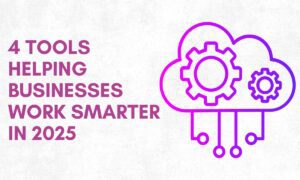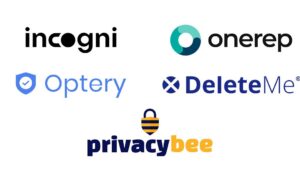In the rapidly evolving landscape of DeFi, innovative protocols are reshaping paradigms. About to join these financial disruptors is Hover, a non-custodial liquidity market protocol built atop the Kava EVM.
Hover’s proposition is clear: to empower users with unrestricted access to digital asset lending and borrowing, enabling them to more effectively navigate traditional market volatility. The vision, to become a leading web3 lending and borrowing platform.
Hover’s architecture aims to deliver a new level of financial agency, a central point of liquidity where users can seamlessly lend their assets to earn yield or borrow assets to amplify their market participation. This will be deployed within a trustless environment where users maintain control and ownership of their assets without need for third-party institutions.
The core features
Hover provides a user-friendly platform for individuals to make their idle assets productive. Any asset supported by the protocol can be deposited directly into Hover and these assets lent to other users. By depositing assets into the protocol, users become liquidity providers earning yield from the interest paid by borrowers.
On the borrowing side, Hover allows users to collateralize their deposits to obtain loans. This flexibility empowers users to navigate market volatility effectively and make strategic financial decisions. Borrowed funds are subject to variable interest rates, aligning with market demand and allowing experienced users to take advantage of yield and arbitrage opportunities.
Hover’s interest rates, driven by supply and demand, provide a continuous insight into the market lending rates. Users are therefore well-positioned to optimize their strategies for yield generation or asset acquisition. The process of depositing and withdrawing assets on Hover has been streamlined for instant execution, establishing a low-friction conduit of liquidity. This seamless experience serves both individual users and dApps that will build on Hover’s liquidity pools.
A key tenet of Hover’s lending mechanism is its over-collateralization model, wherein the amount available for lending is determined by the market value of the deposited collateral. Borrowers, in turn, are equipped with a constantly updated metric, known as Health Factor, that gauges the risk associated with their borrowing activities.
Health Factor is calculated based on the borrower’s total loan-to-collateral ratio, which ranges from 100 to 0. A health factor below 1.25 puts the borrower at risk of liquidation. When the health factor hits 1, collateral is liquidated. A loan’s health can be improved if a part, or the full amount, of the borrowed sum is repaid. Alternatively, more collateral can be supplied to push the Health Factor back up above 1. This transparency ensures that participants have a clear understanding of their risk exposure, fostering responsible borrowing practices within the ecosystem.
Additionally, each asset on Hover has a Collateral Factor (CF), which dictates how much can be borrowed based on the value of the deposit. For example, a 75% CF means up to 75% of the value of the deposit can be borrowed. There is also a Reserve Factor (RF) which determines the proportion of interest allocated into an asset’s Reserve Pool. The Reserve Pool acts as a safeguard, protecting lenders from borrower default and liquidation issues. For example, a 10% Reserve Factor means that 10% of the interest that borrowers pay for that asset would be routed to the Reserve Pool instead of to lenders.
Hover’s ecosystem is about to be kickstarted by its Genesis Pools launch, which will incentivize early participation and engagement. This is enacted by the opportunity to receive amplified yields via participation in a limited-time deposit program. By depositing assets into Hover’s Genesis Pools, users will also contribute to the protocol’s initial liquidity.
Synergy with the Kava network
The Hover protocol is built in collaboration with the Kava network, facilitating institutional-quality borrowing and lending services. The Kava Network employs an innovative co-chain system that links the Ethereum Virtual Machine (EVM) with the Cosmos SDK. This architecture enables integration between Ethereum’s smart contract capabilities and the diverse functionalities of the Cosmos ecosystem.
Such interoperability optimizes scalability for Hover, enabling smooth interactions between users, assets, and projects. This integration is a significant step towards expanding liquidity opportunities, as new projects already using EVM based smart contracts can deploy onto KAVA and Cosmos based projects will find an easier time to bridge assets over to the ecosystem.
With no prominent lending protocol on the Kava EVM co-chain, Hover has the opportunity to capture the market and further strengthen the network. By attracting users and liquidity, and likely also more projects and participants, Hover is positioned to forge further strategic partnerships, enhancing its own services and value proposition.
Kava is one of the fastest growing EVM networks in the world. The blockchain’s impressive six-second block times, powered by the Tendermint Core consensus engine, have facilitated an ecosystem marked by speed and efficiency. The ecosystem initially witnessed exponential growth which was then followed, during challenging market conditions, by a demonstration of resilience.
During its initial growth, total Value Locked (TVL) within Kava’s network reached an all-time-high of $703m by the end of 2021, up from around $100m at the beginning of the year. While this figure decreased significantly as the “crypto winter” set in, the network’s DeFi market share nevertheless increased across 2022, from 0.25% to 0.36%, a testament to its strong developer community. Kava’s TVL currently stands at $196m, up 13% since the start of the year.
Kava Rise, a TVL-based rewards program launched in March 2022, has helped drive participation and innovation, drawing over 100 protocols to the Kava platform in the space of a year. Notable protocols attracted by the program are Curve, a DEX liquidity pool, Sushi Trident, an AMM and routing system from SushiSwap, and Beefy Finance, a decentralized multichain yield optimizer platform. Building on this success, Kava is now focused on scaling adoption and maximizing decentralization by positioning itself to attract larger projects and updating Kava Rise to support projects that drive usage, volume, and fees.
With its decentralized governance led by the Kava DAO and co-chain architecture, the Kava/Cosmos ecosystem offers a dynamic and developer-centric blockchain landscape.
Hover is connecting projects across the Cosmos ecosystem, enabling cross-chain deposits and expanding protocol composability.
Tokenomics that value sustainability
Hover’s approach to tokenomics is another detail distinguishing it from its peers. Where other lending markets feature tokens that are primarily used for solely governance and emissions, Hover’s model adds much more value and targets incentivizing sustainable growth.
This model avoids high base token emissions that only incentivize short term speculators, but instead offers value to those who will most use the platform going forward, encouraging engagement and solidifying the protocol’s long-term viability.
The approach enlists a three-token model. The main HOV token is fungible, transferable, and tradable on the open market. However, in order to enjoy the incentives from the Hover Staking Program, users will stake their HOV to receive an escrowed token – esHOV – which can be used for discounted borrowing and lending rates and liquidation rebates. Stakers qualify for a specific VIP tier, according to the staked amount. The size of the rebate depends on the asset and the amount being borrowed or liquidated.
This second token also confers voting rights and can be further converted to a third token – xHOV – which facilitates regular protocol bonuses. esHOV can be converted to xHOV at a 1:1 ratio upon completion of KYC for eligibility determination.
In addition to these benefits of the staking program, there is also the Hover Rewards Program. Rewards are accumulated every block and distributed in weekly epochs in a mix of xHOV and assets chosen by the core contributors.
Has the Hover team delivered?
Hover is a global venture, its senior team comprised of diverse and seasoned contributors situated around the world. Their backgrounds and expertise include such areas as institutional finance, data analytics, and enterprise marketing. This appears to be a team fueled by a passion for empowering users with expanded access to the DeFi revolution.
The project is primed to make a lasting impact, with its cross-chain support, non-custodial security, institutional-grade services, and advanced risk management, and to establish itself as a premier web3 lending and borrowing platform.
Hover’s collaboration with the Kava network significantly bolsters its scalability and functionality. Via this integration, Hover is able to cater not only to Kava but to the entirety of the Cosmos ecosystem, enhancing liquidity across multiple chains. The growing Kava ecosystem, marked by speed, efficiency, and TVL growth, provides the ideal environment for Hover’s product roadmap.

































